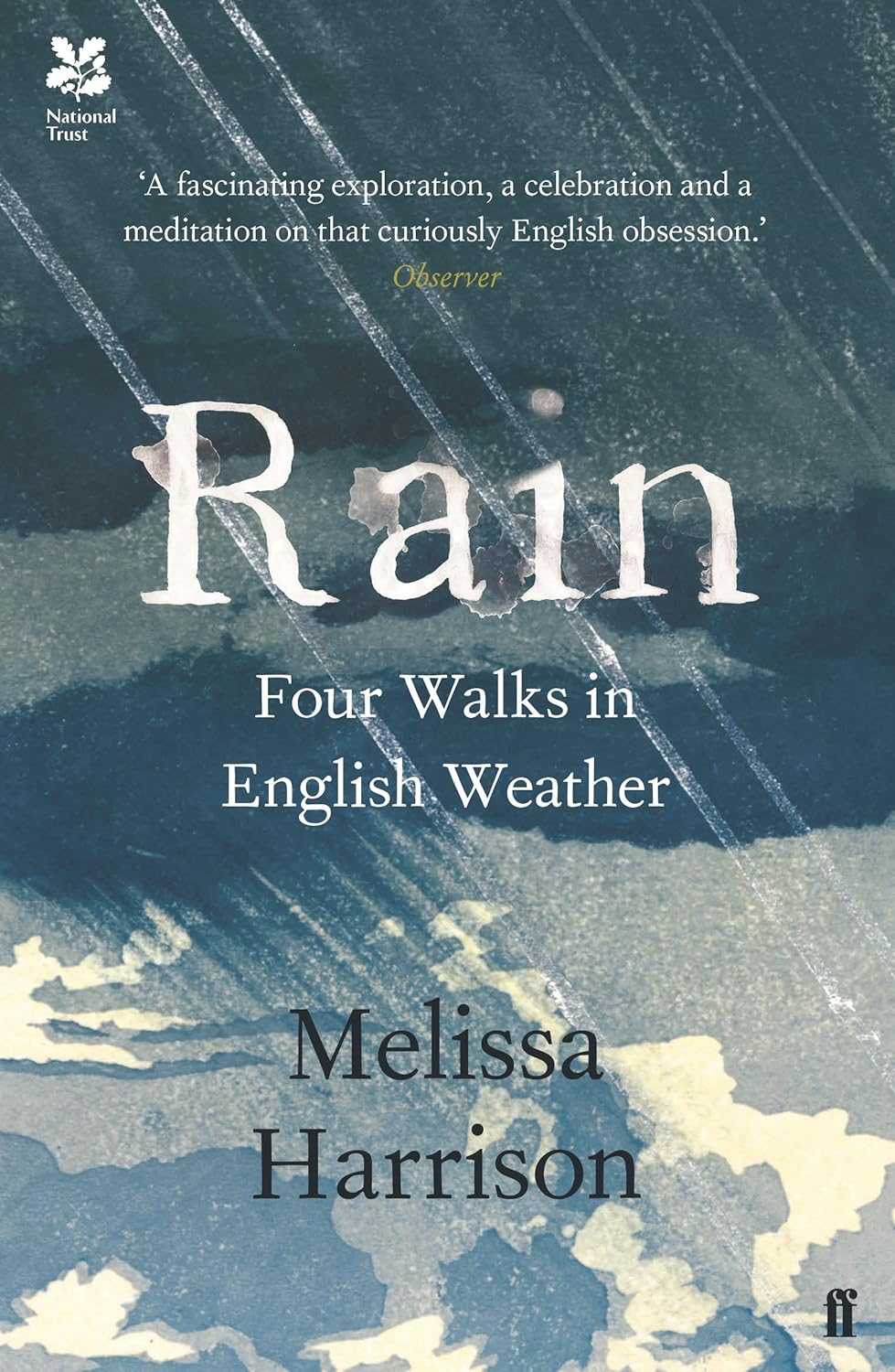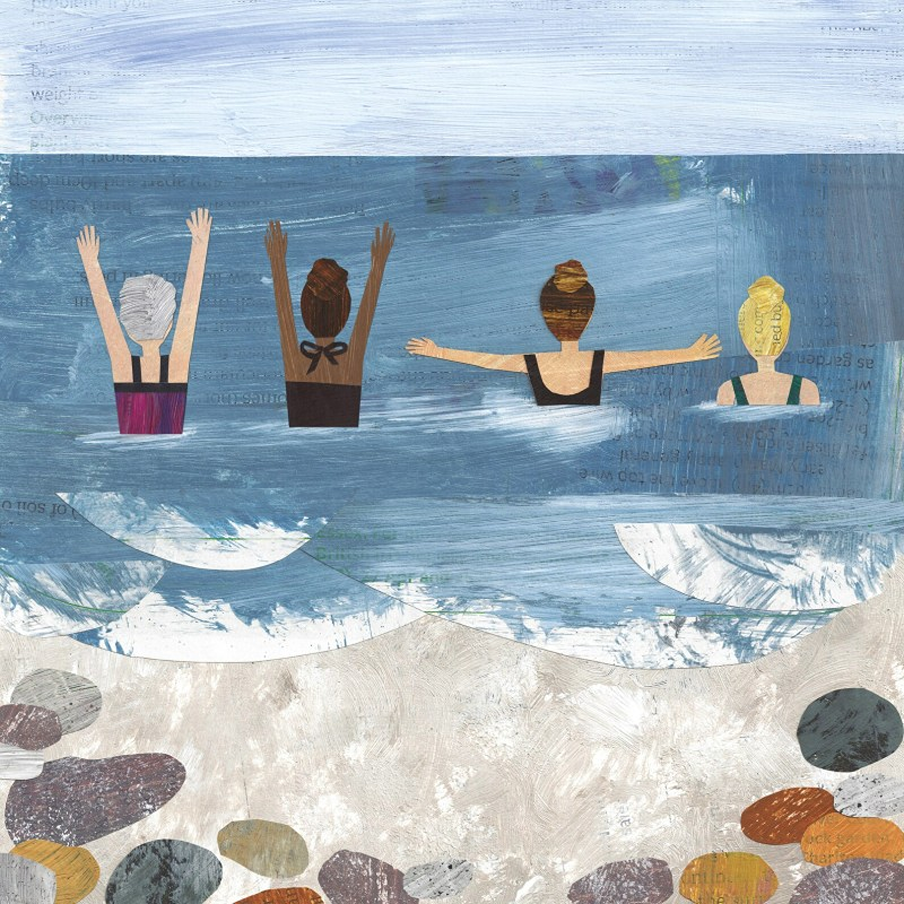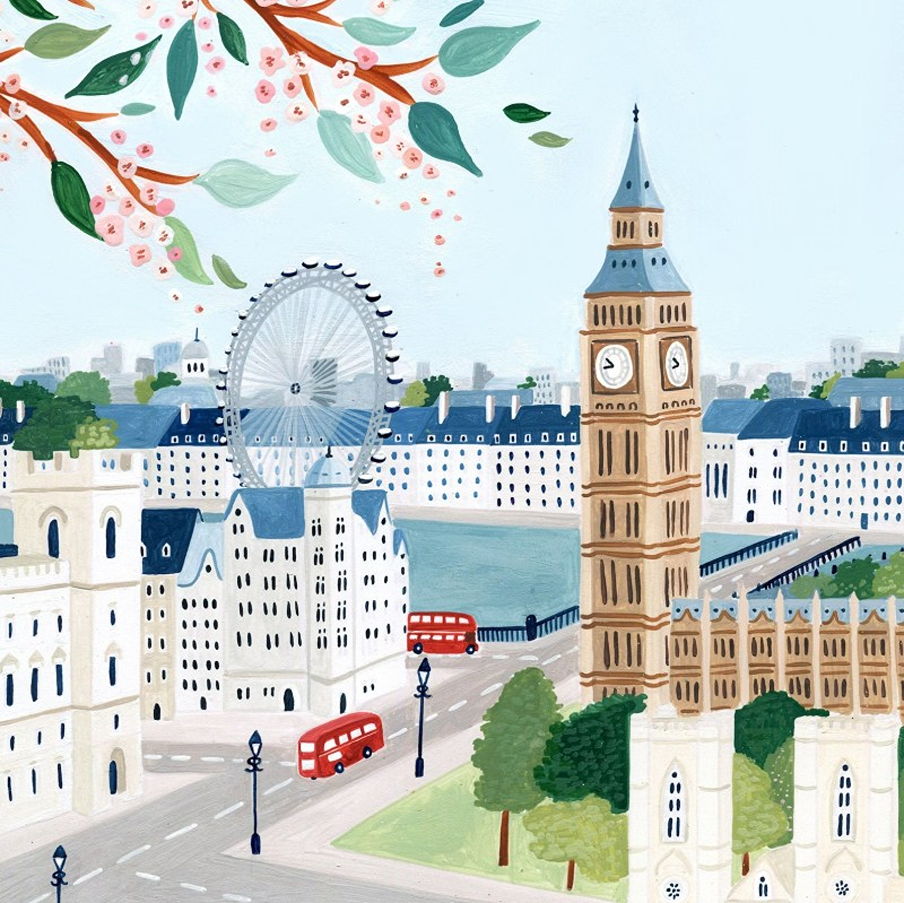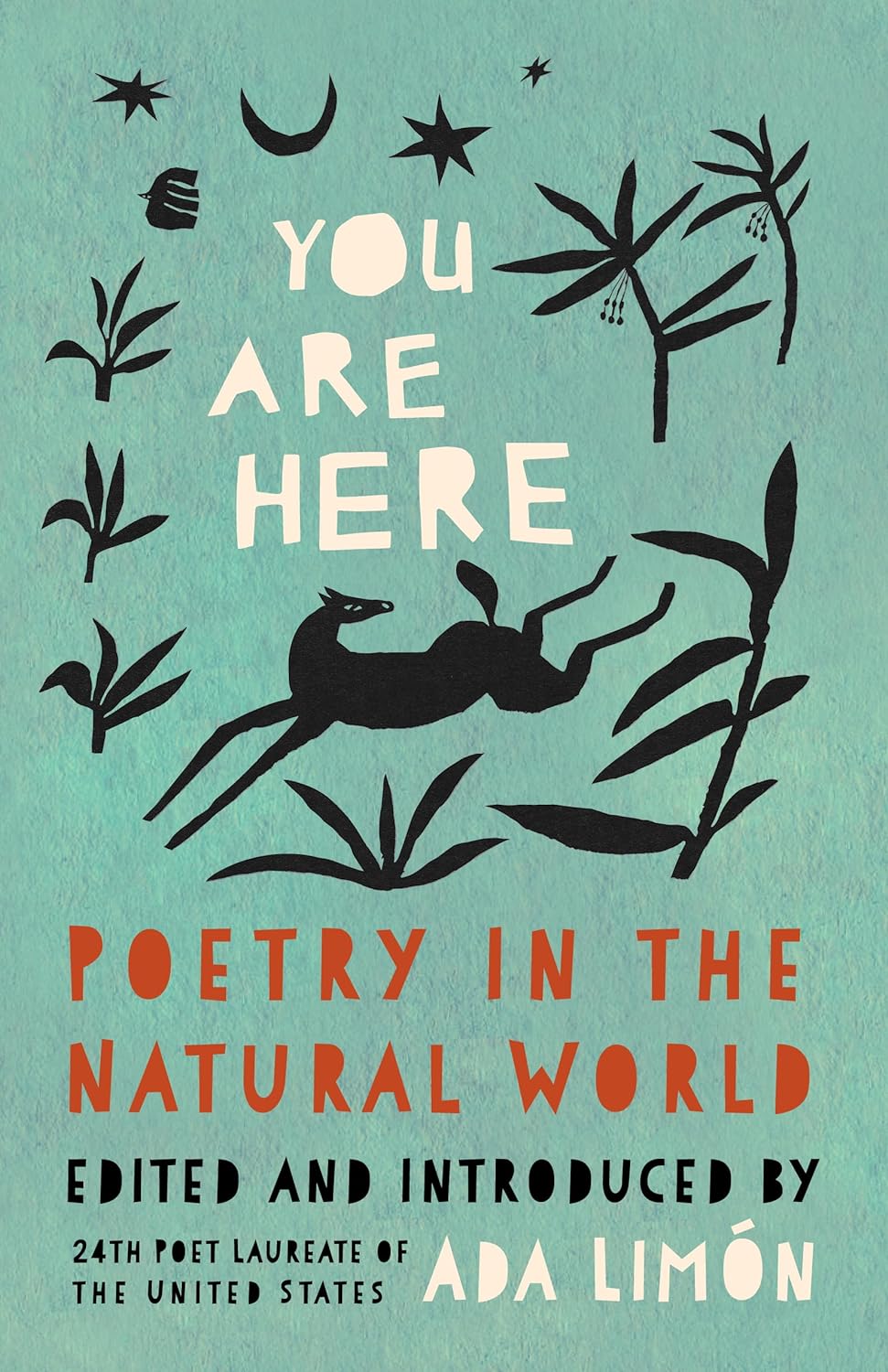Appreciating England’s Regular Rainy Days!

Rain is more than just water from the sky. In English, people have found plenty of ways to describe it. From a gentle sprinkle to a pounding storm, these words bring the weather to life. Each term carries its own mood and meaning.
Knowing these words helps you share how the rain feels, sounds and looks, no matter where you are. Below, you’ll find the many words English speakers use to talk about rain. Whether you love a quiet drizzle or brace yourself against a squall, there’s a term that fits.
188 Words for Rain takes us on a delightfully damp tour of the British Isles. England and surrounding islands have so much drizzly weather, that there are hundreds of words for the rain. From a ‘light smirr’ in Aberdeen to ‘it’s raining knives and forks’ in the Brecon Beacons.
Write and puddle-splasher Alan Connor digs deep into the meaning and quirky histories of words for rain. He gets caught in a ‘plash’ in Northumberland, and ponders why people picnic-in-the-car when it’s raining. In this charming and witty celebration of our national obsession.
Like many of rain words, kelsher is not said only in the west country. It’s used in Lancashire, and by earth scientists and minerologists, and always means the same thing. Heavy and brought on by strong wind.
Petrichor is the name that two Australian scientists came up with, when they saw that the English language lacked a word for the aromas released, when rain hits soil, catches its scent and bounces it into the winds.
Drizzle
Drizzle means light rain with small drops that fall close together. It’s steady but never heavy.
The world looks a bit blurry and damp, but you can often walk in a drizzle without getting soaked. This word suggests a gentle start to a rainy day.
Shower
A shower is a short and sometimes sudden burst of rain. Showers can be light or heavy, and they rarely last long. The sun often peeks out after a shower.
In England, weather reports often mention “scattered showers” to warn about rain on and off.
Downpour
A downpour is heavy rain that falls fast and hard. It can soak you in seconds.
Streets may fill with water and people run for cover. When it’s a downpour, you know you need your umbrella or to stay inside.
Rainstorm
A rainstorm brings a serious amount of rain, often with wind and sometimes thunder. It’s the kind of weather that makes you want to stay inside with a book, or cup of tea. Rainstorms can last for hours and may cause floods in some areas.
Sprinkle
Sprinkle means just a few drops, often brief and light. You might feel a sprinkle on your skin and wonder if it’s really rain. It rarely lasts and doesn’t stop outdoor plans. This word is more common in the US, but people in England use it too.
Mizzle
Mizzle is a soft rain, even finer than drizzle. The word is more common in the south-west of England. It makes the air feel thick and misty, giving everything a damp feel. People say it’s not quite drizzle, not quite mist.
Sleet
Strictly, sleet is a mix of rain and snow or ice pellets. It’s cold and rough, often making roads slippery. While it’s not pure rain, it falls as water drops that partly freeze on the way down.
Spitting
When it’s spitting, the rain is so light you can almost count the drops. It’s like the sky can’t decide if it wants to rain or not. ‘Spitting’ is used often in England, for this sort of rain.
Torrential Rain
Torrential rain means a huge amount of rain falls in a short time. It often leads to flooding and makes visibility very poor. This term describes the kind of rain that soaks you to the skin in seconds.
Mist
Mist is not rain, but it makes everything wet. Mist forms tiny drops in the air that settle on skin, clothes and hair. Mornings or evenings are often misty, leaving grass and roads damp.
Cat-and-Dogs Rain
The phrase “raining cats and dogs” means it’s raining very heavily. While not a technical term, it’s so common in English that everyone knows what it means. It paints a vivid picture of a wild, noisy storm.
Deluge
A deluge is a flood of rain. It’s far more than a heavy shower or even a downpour. A deluge can last, cover large areas, and cause rivers to rise and streets to flood. This word often appears in news reports during major storms.
Monsoon
Monsoon is used for rain that comes with seasonal winds, mostly in parts of Asia and Africa. In English, you might hear ‘monsoon’ to mean several days or more of heavy, steady rain. It’s rare to use it in England regular weather, but people understand the term.
Bucketing Down
If it’s ‘bucketing down’, it’s raining as if someone poured water from a bucket. This playful phrase brings to mind sheets of rain falling in thick, fast streams.
Pattering
When rain ‘patters’, ,it’s making soft sounds as drops hit leaves, windows or the ground. The word paints a cosy picture of gentle rainfall, often linked to evenings or early mornings.
Smattering
A ‘smattering’ of rain is just a few drops here and there. It’s barely enough to dampen the ground. Like a sprinkle, a smattering doesn’t last or cause trouble, but lets you know the weather might change.
Squall
A squall is a sudden, sharp increase in wind speed and often rain. It’s not just about the rain, but the gusty winds that come with it. Squalls can turn a gentle rain into chaos in seconds.
Cloudburst
A cloudburst is an extreme type of downpour, often happening out of nowhere. The rain falls so hard and fast that it can cause flooding almost at once. Clouds seem to open up and let everything go at once.
Liquid Sunshine
This cheerful term means rain while the sun is still shining. It’s rare but magical when it happens. You might even spot a rainbow afterwards.
Dreek
‘Dreek’is a word from Scots, used to describe not just rain but dull, damp and chilly weather. When someone says it’s dreek outside, expect persistent rain and grey skies.

The Lake District (England’s largest National Park) is officially the wettest place in England. Here you can be soaked to the skin within minutes of a downpour. So be sure to bring your natural rubber wellies and windproof umbrella, when visiting!
So why is this area of northwest England rainier than everywhere else? It’s all to do with the nearby Atlantic Ocean, which carries large amounts of moisture from the wind. Mountains (all of England’s highest ones are here) force air to rise. This causes ‘orographic lift. As air rises and cools, it can’t hold moisture, so water vapour then condensed into rain clouds – and lots of them!
Many areas of southern England instead have ‘showers’ which usually fall from individual clouds, with dry sunny intervals in between. In Sussex say, you could have a downpour and the pavement will be dry within an hour.
But in Cumbria, that doesn’t happen. The ground stays wet for ages, which is why farmers have a constant battle using sprays to prevent foot rot on sheep, as the grass never dries out in winter.
The Met Office will always describe this kind of heavy rain in forecasts as ‘prolonged’ or ‘persistent’ rain.
Where Are England’s Rainiest Places?

Grey clouds gather over green hills. They carry stories, not just of weather, but of grass that never browns and rivers that rush thick and fast. England’s rain is a quiet companion, persistent and familiar, painting some corners of the country in richer, deeper shades of green.
The following places top the charts for rainfall, each with its own soggy charm and gentle rhythm, shaped by the constant arrival of clouds.
So it’s time to don your natural rubber wellies and sustainable raincoat, and put up your windproof brolly. Here’s a quick lowdown on England’s rainiest places!
Seathwaite, Cumbria
Here in the Borrowdale Valley, rain is more than weather. It’s character. Seathwaite claims the crown for the wettest inhabited spot in England. Yearly, it sees over 3,500 millimetres of rainfall. That’s almost four times the English average.
The hills rise close and steep on both sides, catching passing clouds and wringing them dry. Streams lace the grass, meeting the Derwent below in quick, bright channels. Mud slicks the stone paths and moss clings to every shaded surface.
Sprinkling Tarn, Lake District
Perched high above Borrowdale, Sprinkling Tarn sits under a sky that always seems heavy. Sometimes the rain falls in thick sheets, sometimes in a fine drifting spray. This mountain lake, wild and remote, soaks up over 3,300 millimetres of precipitation each year.
The surrounding peaks, like Great End and Seathwaite Fell, scoop up Atlantic storms as they sweep across Cumbria. Walkers often feel the shift in the air – a hush, then a sudden rush as rain needles the water’s surface. Afterward, the world brightens as if freshly washed.
Grasmere, Lake District
Grasmere’s charm is rain-drenched. The village nestles between brooding hills and mirror lakes. Its rainfall, just shy of 2,800 millimetres a year, feeds ancient woods and gardens full of ferns. Rains here blur the edges of stone cottages and bring out the scent of wet earth.
Wordsworth wrote poems in this village, pausing under dripping ash trees, and the rain still soaks visitors as they wander beside the water. Morning showers clear to reveal silver light on the hills.
Capel Curig, Snowdonia (close to the border)
Just across the Welsh border, Capel Curig deserves a nod. At over 2,900 millimetres of rain each year, this village shapes North Wales’ damp reputation. Puffy clouds tumble in from the Irish Sea and break over mountains.
The rain falls quick and sharp or lingers for days in gentle drizzle. While not English by county, its proximity and fame make it part of the region’s rainy story, and the pattern spills eastward over the border into Cumbria and Northumberland.
Keswick, Lake District
Keswick stands as a testament to persistent weather. Sitting under Skiddaw’s dark slopes and beside Derwentwater, the town collects just over 2,600 millimetres of rainfall a year. The rain here fills the streams and lifts the scent of pine from thick woods.
Market days often begin with a wash of rain, clearing just in time for the sun to slip through. Despite the near-constant wet, Keswick hums with life – cafés, walkers, and busy shops.
Whinlatter Pass, Cumbria
Sometimes the clouds move low and slow across Whinlatter Pass. The high ridge, carved into the northern Lakes, acts as a net for rain from the west. This narrow pass receives nearly 2,500 millimetres each year.
The trees here, thick conifers, drip and glisten. Mist floats up from the valley, curling around forest tracks. Walkers learn to love the sound of rain on leaves and the hush of mist among pines.
Shap, Cumbria
High on the eastern edge of the Lake District, Shap feels the full force of passing weather fronts. Here, over 1,500 millimetres of rain a year falls on open ground, worn smooth by the wind.
The rain keeps the moors lush and paints limestone walls bright green with moss. Clouds come fast across the fells, bringing rain that soaks quickly into the earth.
Honister Pass, Lake District
Honister is wild and steep, carved by ancient glaciers and constant streams. Rain collects here, drawn in by the surrounding peaks. The pass sees above 2,700 millimetres of rain each year.
Water rushes down from slate hillsides, filling Honister Gill with a restless, tumbling song. On the wettest days, the road itself can vanish beneath a curtain of rain. Still, the pass has a stark kind of beauty, with weather that shapes every stone.
Glenridding, Ullswater
The village of Glenridding, at the southern tip of Ullswater, soaks in the rain and keeps its lakeshore bright. Almost 2,200 millimetres of water fall every year, feeding the streams that empty into the lake.
Gardens bloom in thick clusters, and the fields stay green even in the sharpest summer sun. When a sudden shower comes, the clouds cling low over Helvellyn, and the world turns quiet, waiting for the next splash of sunlight.
Buttermere, Lake District
Tucked away between high ridges, Buttermere stays wet. It averages more than 2,000 millimetres of rainfall a year. The rain gathers in still water, blurs the outlines of sycamore trees, and echoes off the hills.
Sheep graze close, finding shelter under old oaks. The rain here isn’t a passing nuisance; it’s a companion, shaping valley life and colouring the fells rich and deep.
How to Stay Safe During Thunderstorms
- Keep a safe distance from trees and metal objects (umbrellas, golf clubs, motorbikes, wheelchairs, tent poles).
- Stay inside cars (fabric tops could catch fire, if struck).
- If exposed, squat close to the ground with hands on knees, and tuck head between them, touching as little of the ground with your body (don’t lie down).
- If your hand stands on end, drop to the above position immediately.
How to Upright a Rain-Drenched Sheep

In many places (like Cumbria) there are more sheep than people out-of-season. And farmers have a constant struggle looking after sheep, due to the grass never drying out (causing foot rot).
Although many sheep fall over due to pregnancy, others due to wool coats becoming soaked with rain.
If you can’t find a farmer immediately, you need to ‘right the sheep’ and stay with it, until the rain has drained off.
Sheep don’t sleep on their backs, due to having four stomach chambers. To help, gently approach the sheep, grab a handful of wool and turn it back upright. It’s quite simple. The sheep won’t thank you (!), but will likely run off to join the flock.
Stick around to make sure the sheep is okay, then alert the farmer, if you can. He or she will thank you!
Always follow the Countryside Code, to keep dogs & livestock safe.






